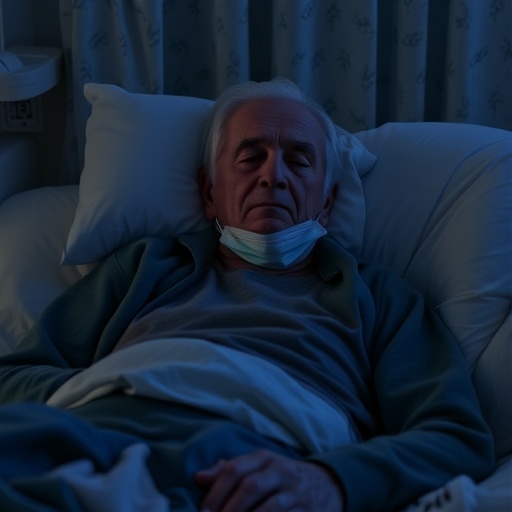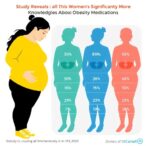
Insomnia and its repercussions have long been recognized as significant challenges to health and well-being, particularly among older adults. Recent research from the Penn State College of Health and Human Development, in collaboration with Taipei Medical University, casts new light on the profound impact chronic insomnia and sleep medication use can have on late-life disability. Utilizing extensive longitudinal data collected over five years, the study compellingly demonstrates that increases in insomnia severity and frequency of sleep medication consumption are strongly linked to a heightened risk of disability among adults aged 65 and older.
The researchers meticulously examined data from 6,722 participants enrolled in the National Health and Aging Trends Study (NHATS), which provides an invaluable, nationally representative sample of Medicare beneficiaries over 65 years old. Drawing on more than 22,000 observations spanning from 2011 to 2015, the team employed rigorous analytic techniques to explore how year-to-year changes in insomnia symptoms and sleep medication usage relate to changes in participants’ functional disability levels across a spectrum of daily activities. Their findings reveal a disturbing trajectory whereby worsening sleep issues correspond with a stepping up in reliance upon assistance for essential self-care and mobility tasks.
Disability in this context was quantified using a validated ordinal scale that assesses multiple domains of independence, including fundamental self-care activities like dressing and eating, as well as mobility-oriented actions like transferring from bed or stepping outside. Each activity was rated categorically based on capacity: fully able, vulnerable (indicating some difficulty or need for accommodation), or requiring assistance. These gradations were numerically encoded, allowing for the sensitive detection of clinically meaningful deterioration over time. Importantly, the study identified that an increase of two or more points—reflecting either a deeper level of vulnerability or a transition to needing help—was indicative of significant functional decline with real-world consequences.
Examining both insomnia and sleep medication use on a frequency scale from ‘never’ to ‘every night,’ the study found that for every incremental increase in insomnia symptom frequency, the corresponding disability score actually rose by 0.2 points approximately one year later. Similarly, each step up in sleep medication frequency predicted a 0.19 point increase in disability score over the ensuing year. Critically, individuals experiencing concurrent high levels of insomnia symptoms and frequent sleep medication use were at the greatest risk of entering a downward spiral towards disabling conditions, reinforcing the interplay between untreated sleep difficulties and pharmacological interventions.
Beyond these numerical correlations, the underlying mechanisms linking disrupted sleep to physical disability merit careful consideration. Prior work by the same research team revealed that older adults using sleep medications experienced increased incidence of falls, a well-recognized precipitant of functional decline and loss of independence. It is plausible, therefore, that the sedative effects and residual cognitive impairments associated with many hypnotics may contribute to accidents that accelerate disability progression. Meanwhile, chronic insomnia itself can lead to systemic physiological and neurocognitive deficits, including impaired balance, diminished muscle strength, and decreased executive functioning, all of which potentially erode the ability to perform activities of daily living.
The implications of these findings extend far beyond academic curiosity, highlighting an urgent public health concern. Sleep disturbances are highly prevalent among the elderly, with up to half of adults aged 65 and older experiencing insomnia symptoms at some point. Yet, misperceptions that sleep disruptions are a benign, inevitable feature of aging remain pervasive, delaying appropriate diagnosis and treatment. Moreover, older individuals often remain unaware of the complex interactions between sleep medications and their overall health status, which can inadvertently increase vulnerability rather than provide relief.
Physicians and clinicians face a challenging landscape when addressing insomnia in this demographic due to concerns about medication side effects and the shortage of specialized behavioral sleep medicine resources. Cognitive Behavioral Therapy for Insomnia (CBT-I) stands out as a frontline non-pharmacologic treatment with robust evidence demonstrating efficacy and safety, yet access remains limited, especially in rural settings. The study authors advocate for enhanced communication between older adults and their healthcare providers to ensure that sleep problems are accurately recognized, medications are reviewed for potential adverse interactions, and alternative treatments like CBT-I are actively offered.
This fresh body of evidence underscores the necessity for a paradigm shift in how insomnia and sleep problems are conceptualized and managed among older adults. Sleep should no longer be dismissed as a background concern; rather, it warrants direct, proactive intervention to preserve functional independence and quality of life. The trajectory from disrupted sleep to disability is insidious but potentially modifiable with concerted clinical attention and patient empowerment. Educational campaigns raising awareness about the seriousness of insomnia and the risks attached to sleep medication misuse could catalyze earlier engagement in safer treatment strategies.
Furthermore, public health policymakers should consider prioritizing funding and infrastructure to expand access to behavioral sleep interventions, integrate multidisciplinary approaches within geriatric care, and foster longitudinal monitoring systems that identify at-risk individuals before disability ensues. Given the demographic trends toward an aging global population, mitigating the cascade from insomnia to disability could profoundly lessen caregiving burdens, healthcare expenditures, and social costs associated with late-life dependency.
The multidisciplinary approach embodied in this collaboration between Penn State and Taipei Medical University exemplifies the kind of rigorous international research needed to navigate the complexities of aging, sleep, and functional health. Supported by the National Science and Technology Council of Taiwan, the study paves the way for future investigations to refine understanding of the pathophysiological pathways linking sleep disturbances to disability and to innovate targeted interventions across diverse healthcare contexts.
In conclusion, the emerging evidence reveals that insomnia symptoms and sleep medication use are not simply inconvenient nuisances but are significant contributors to the progression of disability in older adults. The findings demand heightened vigilance from healthcare providers and public health officials alike to prioritize safe and effective management of sleep disorders. Ultimately, safeguarding restorative sleep holds promise as a crucial lever in preserving autonomy and enhancing quality of life for the aging population, underscoring the inseparable link between sleep health and successful aging.
Subject of Research: Relationship Between Insomnia Symptoms, Sleep Medication Use, and Late-Life Disability in Older Adults
Article Title: Late-life Disability May Increase with More Frequent Insomnia Symptoms and Sleep Medications Use Over Time
News Publication Date: 14-Apr-2025
Web References:
National Health and Aging Trends Study (NHATS): https://www.nhats.org/researcher/nhats
Journal Sleep Article DOI: http://dx.doi.org/10.1093/sleep/zsaf098
References:
Buxton, O., et al. (2025). Late-life Disability May Increase with More Frequent Insomnia Symptoms and Sleep Medications Use Over Time. Sleep. DOI: 10.1093/sleep/zsaf098
Prior related studies on sleep medication and fall risk in older adults: https://academic.oup.com/sleep/article/40/11/zsx142/4159943
Keywords: Insomnia, Sleep Medication, Older Adults, Disability, Ageing, Sleep Disorders, Cognitive Behavioral Therapy, Functional Decline, Falls, Medicare Beneficiaries
Tags: aging and health challengeschronic insomnia effectsfunctional disability in seniorshealth impacts of insomnia treatmentinsomnia in older adultslongitudinal study on sleep issuesMedicare beneficiaries disabilityrelationship between insomnia and mobilityresearch on elderly health and sleepsleep disorders and agingsleep medication use and disabilitysleep quality and daily activities


